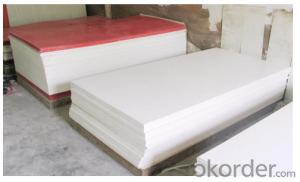Fiberglass mesh, a material that has been around for a while, has been making waves in the construction industry, particularly in the realm of stucco applications. This innovative material is not just a simple addition to the stucco mix; it’s a game-changer that significantly enhances the durability and longevity of the final product. But what exactly is fiberglass mesh, and how does it contribute to the stucco’s performance? Let’s dive into the world of fiberglass mesh and explore its benefits, applications, and installation process.
The Wonders of Fiberglass Mesh
Fiberglass mesh is a lightweight, yet strong material made from woven glass fibers. It’s known for its high tensile strength, resistance to corrosion, and ability to withstand harsh weather conditions. These properties make it an ideal candidate for reinforcing stucco, a popular exterior wall finish that is both aesthetically pleasing and durable.
Enhancing Durability
One of the primary reasons fiberglass mesh is favored in stucco applications is its ability to enhance the durability of the wall system. Traditional stucco, while strong, can be susceptible to cracking and damage over time due to environmental factors such as temperature fluctuations and moisture. By incorporating fiberglass mesh into the stucco mix, these issues can be mitigated, resulting in a more robust and long-lasting finish.
Versatility in Applications
Fiberglass mesh is not just limited to residential applications. It’s also widely used in commercial and industrial settings where the demands for durability and strength are even higher. Whether it’s a high-traffic area or a building exposed to extreme weather conditions, fiberglass mesh can provide the necessary reinforcement to ensure the stucco remains intact and functional.
Installation Process
The installation process of fiberglass mesh in stucco is relatively straightforward. It involves attaching the mesh to the wall surface, followed by the application of a base coat of stucco. Once the base coat is dry, a layer of fiberglass mesh is embedded into it, and then a finishing coat of stucco is applied on top. This process ensures that the mesh is well-integrated into the stucco, providing a seamless and strong surface.
Maintenance and Care
One of the perks of using fiberglass mesh in stucco is the low maintenance it requires. Unlike other materials that may require regular inspections and repairs, fiberglass mesh-stucco systems are quite low-maintenance. Occasional inspections are recommended to ensure that the stucco is in good condition, but other than that, homeowners can enjoy peace of mind knowing their exterior walls are well-protected.
The Emotional Connection
While the technical benefits of fiberglass mesh are undeniable, there’s also an emotional aspect to consider. A well-maintained exterior not only adds to the curb appeal of a property but also provides a sense of pride and accomplishment for the homeowners. Knowing that their home is protected by a durable and reliable material like fiberglass mesh can instill a sense of security and satisfaction.
The Future of Fiberglass Mesh in Stucco
As the construction industry continues to evolve, materials like fiberglass mesh are becoming increasingly important. With a growing emphasis on sustainability and energy efficiency, the use of fiberglass mesh in stucco is expected to grow. Its lightweight nature and resistance to corrosion make it an environmentally friendly choice that can contribute to a building’s overall energy performance.
Conclusion
Fiberglass mesh has proven to be a valuable addition to the world of stucco, offering enhanced durability, versatility, and low maintenance. Its integration into the stucco process is straightforward, and the emotional benefits of a well-protected home cannot be overlooked. As we look to the future, the use of fiberglass mesh in stucco is likely to become even more prevalent, offering homeowners and builders alike a reliable and sustainable solution for exterior wall finishes.

